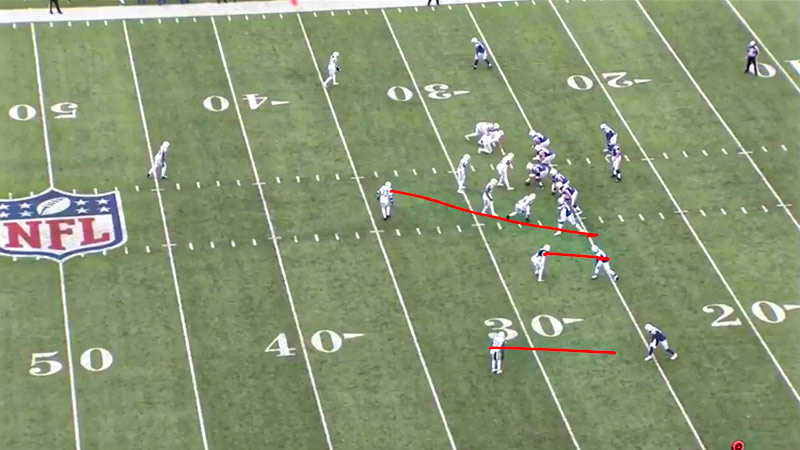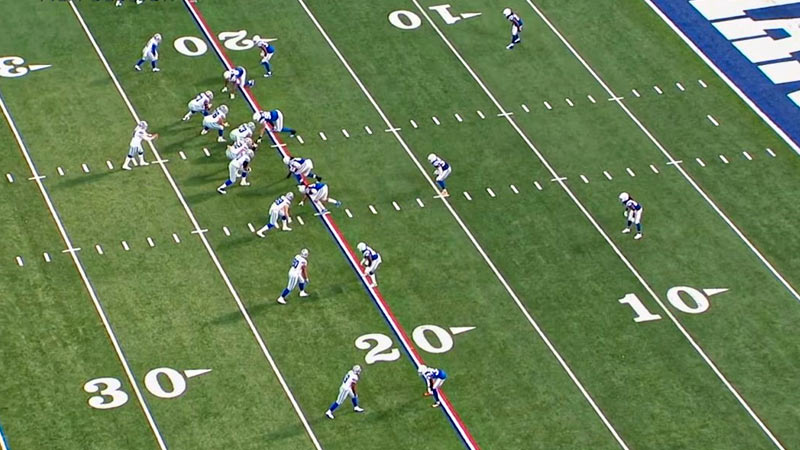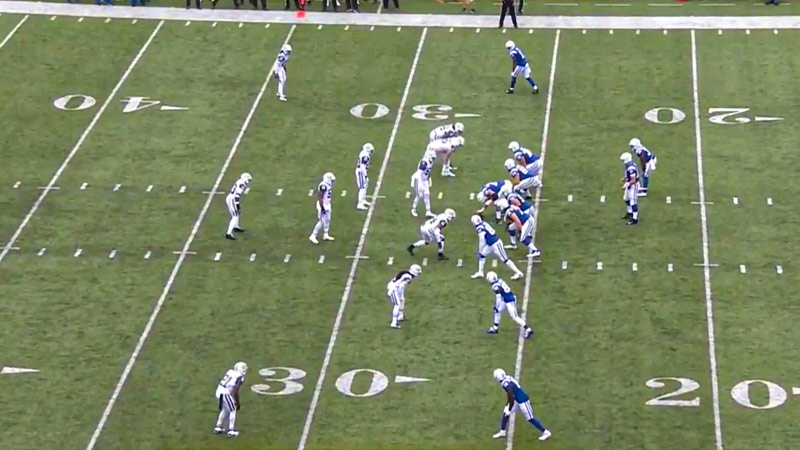In the world of American football, defensive strategies play a crucial role in determining the outcome of a game. Among the various tactics employed by teams, the football man-to-man coverage technique stands out as a formidable defensive technique that demands skill, precision, and unwavering focus.
In this article, we delve into the intricacies of football man-to-man coverage, exploring its origins, principles, and the key factors that make it a potent weapon in a team’s defensive arsenal.
From press coverage to shadowing techniques, we will uncover the secrets behind successful man-to-man coverage and the challenges faced by defenders in executing this strategy effectively.
Whether you’re a football enthusiast, a player, or a coach looking to enhance your defensive prowess, this comprehensive guide will provide valuable insights into the art of football man-to-man coverage, empowering you to dominate the field and stifle even the most formidable offensive threats.
What Is Football Man To Man Coverage?
In football, man-to-man coverage is a defensive strategy where each defensive player is assigned to cover a specific offensive player.
The defenders are responsible for staying with their assigned offensive player throughout the play, attempting to prevent them from catching a pass or gaining yardage.
In man-to-man coverage, defenders typically line up directly across from the offensive player they are assigned to cover. They closely follow their assigned player’s movements, mirroring their routes and attempting to disrupt their timing with the quarterback.
The goal is to deny the offensive player any separation and make it difficult for them to make a catch or gain yards after the catch.
Man-to-man coverage is often used in situations where the defense wants to take away specific offensive threats or disrupt the timing of the passing game. It requires defenders to have good speed, agility, and coverage skills to effectively stick with their assigned players.
Types of Man to Man Coverage in Football
There are several variations of man-to-man coverage in football. Here are some common types:
Press Man Coverage
In press man coverage, the defensive player lines up directly across from the offensive player and attempts to disrupt their route at the line of scrimmage. The defender uses physicality and aggressive hand techniques to jam the receiver and throw off their timing.
Off Man Coverage
In off-man coverage, the defensive player lines up a few yards off the line of scrimmage, giving the receiver some space. The defender’s goal is to maintain a cushion between themselves and the receiver while still staying in position to make a play on the ball.
Trail Technique
The trail technique is often used by defensive backs when covering speedy receivers. The defender initially lines up behind the receiver and trails them closely, attempting to stay in their hip pocket and prevent separation.
Cover 0
In cover 0, all eligible receivers are assigned a defender, man-to-man, with no deep safety help. This aggressive coverage is often used in blitz-heavy situations, where the defense aims to disrupt the quarterback’s timing and force quick throws.
Cover 1
Cover 1 is similar to cover 0 but with one deep safety responsible for providing help over the top. The remaining defenders are assigned man-to-man coverage on the receivers, with the safety providing support if any receiver gets past their assigned defender.
Cover 2 Man
In Cover 2 man, the defense employs a two-deep zone coverage with the cornerbacks playing man-to-man on the outside receivers. The safeties are responsible for covering the deep halves of the field, providing help over the top.
These are just a few examples of man-to-man coverage variations. Defensive coordinators often mix and match these coverages based on the strengths of their personnel and the offensive threats they are facing.
How to Identify and Exploit the Man Coverage?

To identify and exploit man coverage in football, here are some strategies:
Pre-Snap Read
Before the snap, observe the defensive alignment. Look for clues such as defenders lined up directly across from offensive players, corners playing tight to the line of scrimmage, or linebackers showing man-to-man responsibilities. These indicators can suggest man coverage.
Recognize Matchups
Identify favorable matchups where your receivers have an advantage over the defenders assigned to cover them. This could be due to differences in speed, size, or route-running ability. Exploit these matchups by targeting those receivers with well-designed routes.
Use Motion and Shifts
Pre-snap motion and shifts can help reveal whether the defense is in man coverage. If a defender follows a receiver in motion, it indicates man coverage. Exploit this by using motion to create mismatches or confusion for the defense.
Double Moves
Man coverage often involves defenders closely following receivers. Take advantage of this by utilizing double moves, where the receiver initially makes a quick move in one direction before quickly changing direction. This can create separation and lead to big plays.
Rub Routes and Picks
Use rub routes or picks to create traffic and confusion for the defenders. By having receivers cross paths or set screens, it becomes difficult for defenders to stay with their assigned receivers, opening up opportunities for completions.
Exploit One-on-One Situations
Man coverage typically means there is no deep safety help. Look for opportunities to attack deep downfield or exploit one-on-one matchups with quick slants, fades, or back-shoulder throws.
Utilize Play Action
Play-action passes can freeze linebackers and safeties, creating separation for receivers in man coverage. The run fake can draw defenders closer to the line of scrimmage, leaving receivers open downfield.
Quarterback Scrambles
If the defense is in man coverage, the defenders will have their backs turned to the quarterback. Exploit this by having the quarterback scramble when the receivers’ routes break down, potentially creating open space for a big gain.
Remember, identifying and exploiting man coverage requires a combination of pre-snap analysis, understanding matchups, and executing well-designed plays.
Coaches and players often study film and game plans to identify tendencies and weaknesses in the opposing team’s man coverage schemes.
Some Common Man Coverage Strategies

When employing man coverage strategies in football, here are some key considerations:
Communication
Effective communication among defenders is crucial in man coverage. Players need to communicate assignments, switches, and potential threats to ensure everyone is on the same page and there are no coverage breakdowns.
Physicality and Jamming
Press coverage can disrupt the timing and routes of receivers. Defensive backs should use physicality at the line of scrimmage to jam receivers, throw off their timing, and redirect their routes. This can buy time for the pass rush and disrupt the quarterback’s rhythm.
Proper Technique
Defenders must maintain good technique throughout the play. This includes staying low in their stance, keeping their eyes on the receiver’s hips, and using proper footwork to mirror the receiver’s movements.
Good technique helps defenders stay in position and react quickly to the receiver’s actions.
Trail Technique
When trailing a receiver, defenders should focus on staying in the receiver’s hip pocket and mirroring their movements. This technique allows defenders to maintain tight coverage and be in a position to make a play on the ball.
Eye Discipline
Defenders must have disciplined eyes and not get caught peeking into the backfield. Maintaining focus on the receiver helps prevent getting beaten by double moves or misdirection plays.
Recovery Speed
Even with good coverage, receivers can sometimes gain separation. Defenders need to have the speed and agility to recover quickly and close the gap, minimizing the receiver’s advantage.
Use of Hands
Defenders should use their hands effectively to disrupt the receiver’s route and timing. Proper hand placement and timing can help defenders maintain contact without drawing penalties.
Awareness of Picks and Rub Routes
Offenses often use picks or rub routes to create traffic and confusion for defenders. Man coverage defenders need to be aware of these tactics and communicate with teammates to navigate through the traffic and maintain coverage.
Adjustments
Coaches may make adjustments to man coverage based on the offense’s tendencies or specific threats. This could involve providing safety help over the top, using zone coverage in certain areas of the field, or implementing bracket coverage on key receivers.
Film Study
Studying film of the opposing team’s man coverage tendencies, receiver routes, and individual matchups can provide valuable insights for defenders. Understanding the tendencies and tendencies of the offense can help defenders anticipate routes and make better decisions on the field.
By implementing these strategies, defenders can effectively execute man coverage and limit the effectiveness of the opposing team’s passing game.
FAQs
How do defensive players decide which offensive player to cover in man-to-man coverage?
In man-to-man coverage, defensive players are typically assigned specific offensive players to cover based on their skill set, position, or the offensive formation.
Coaches and defensive coordinators determine these assignments based on scouting reports, game plans, and individual player strengths.
What are the challenges of playing man-to-man coverage?
Man-to-man coverage can be challenging for defenders due to the need for excellent coverage skills, speed, and agility.
Defenders must stay in close proximity to their assigned receiver throughout the play, which requires maintaining proper technique and footwork.
How can offenses counter man-to-man coverage?
Offenses have several strategies to counter man-to-man coverage. They can use motion and shifts to create confusion and mismatches, run pick plays to create traffic for defenders, or utilize route combinations that exploit the weaknesses of specific defenders. Q
When is man-to-man coverage most effective?
Man-to-man coverage is often most effective when defenders have the necessary skills to match up well against the opposing receivers. It can be particularly effective against offenses that heavily rely on timing-based passing attacks or have standout individual receivers.
What are the limitations of relying solely on man-to-man coverage?
While man-to-man coverage can be effective, it also has limitations. It requires defenders to have exceptional coverage skills and athleticism, which not all players possess. Additionally, man coverage can leave defenders vulnerable to certain route combinations, such as pick plays or crossing routes.
Bottom Line
Mastering the art of football man-to-man coverage is a skill that separates the elite defenders from the rest. It requires a deep understanding of the game, impeccable technique, and the ability to anticipate and react swiftly to the movements of the opposing team.
By employing this defensive strategy effectively, teams can disrupt the passing game, limit offensive options, and create opportunities for turnovers.
However, it is important to note that man-to-man coverage is not without its challenges.
It demands physicality, agility, and mental toughness from the defenders, as they must constantly battle against skilled receivers and navigate through complex offensive schemes.
Coaches and players must invest time and effort into honing their skills, studying film, and developing a cohesive defensive game plan.







